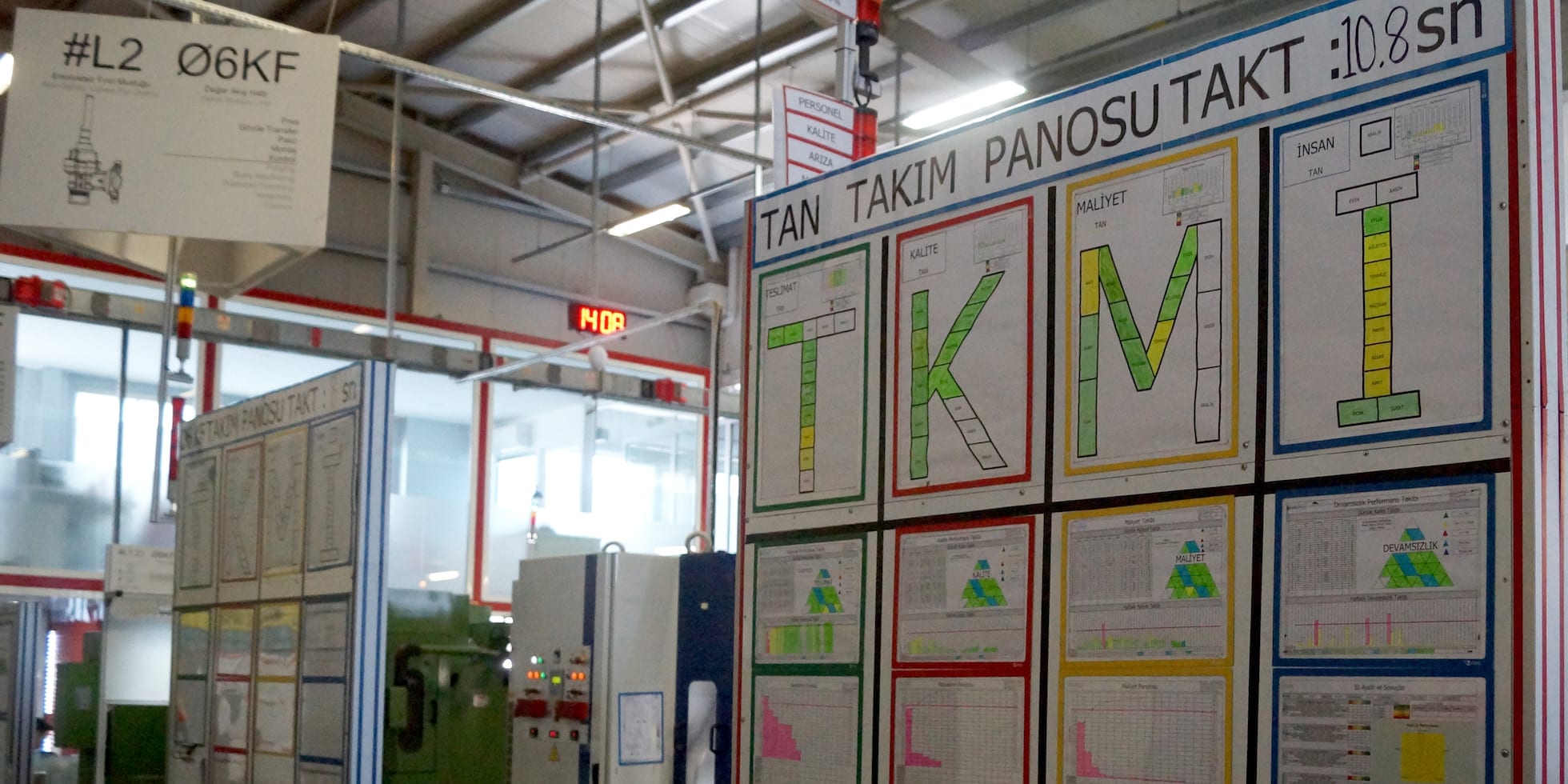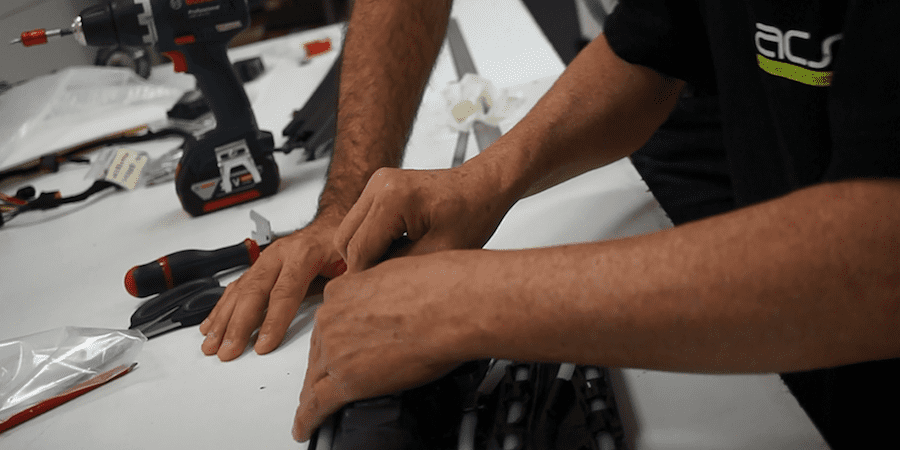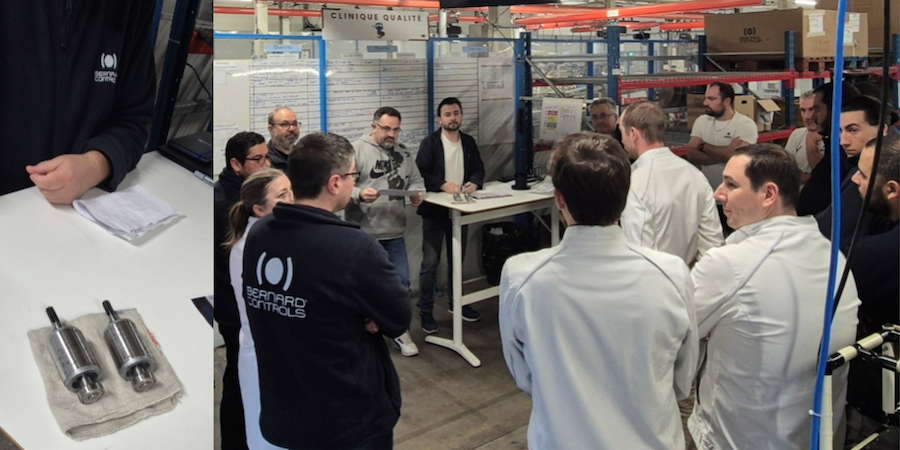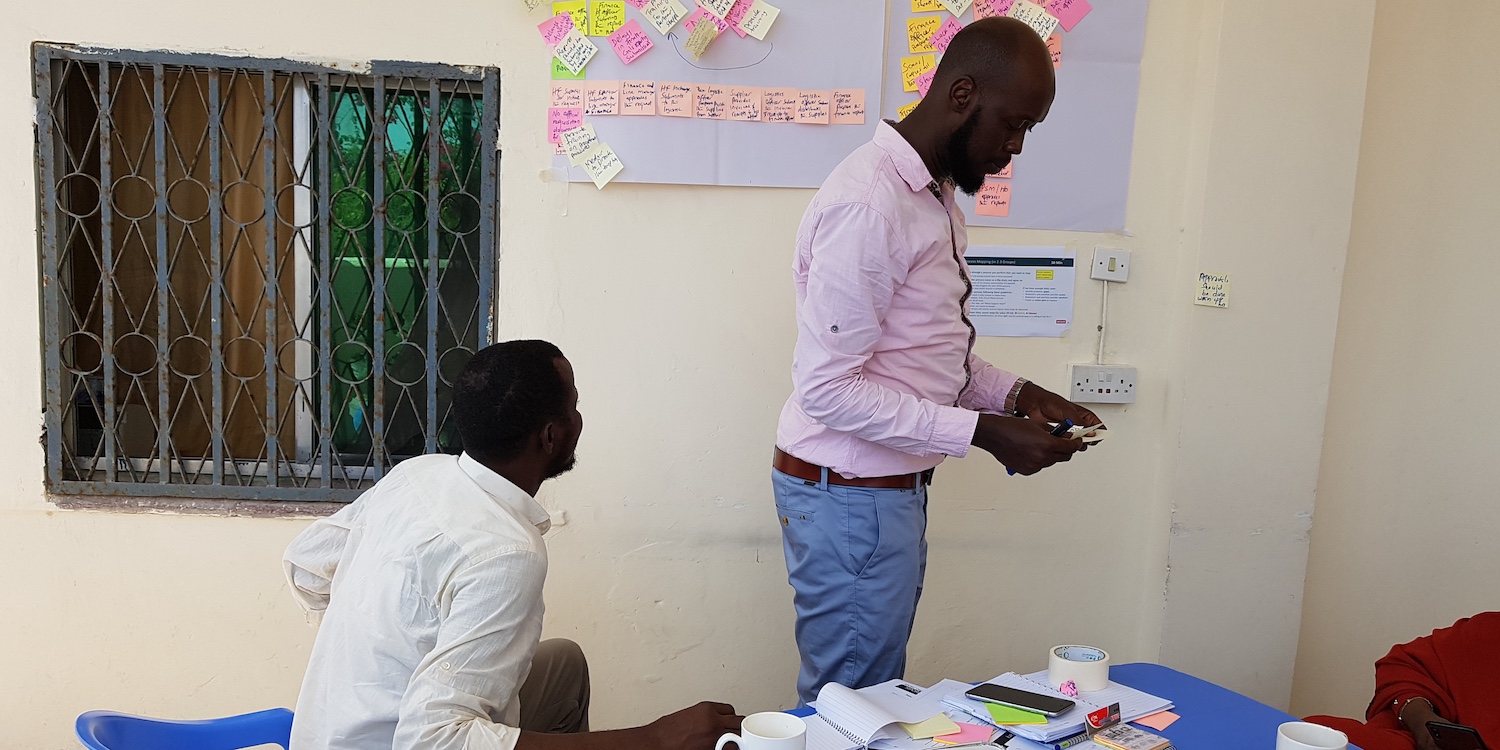
Pulling it off
CASE STUDY – A Turkish producer of gas valves for kitchen appliances has discovered the power of the lean principles of pull and flow, reaching results beyond its imagination.
Words: Aykut Can Yildiz, Managing Director, Turaş Gas – Istanbul, Turkey
Our first encounter with the lean philosophy was through Eli Goldratt’s book The Goal, around six years ago. Back then, we needed to boost our productivity and reduce customer complaints. We soon found out there was a lean institute in Turkey, so we read their books and ended up hiring them as our coaches. They have supported us throughout our journey.
We are one of three main gas valves producers worldwide, and our 15,000-square-meter factory churns out 35,000 valves per shift. Forty percent of what we produce is exported, which puts us in a good position now that the Turkish economy is going through a difficult time. Today, we also enjoy high levels of quality (in 2017, we had under 50 PPM – that is, under 50 defective items per one million items produced), which keeps us competitive.
Lean has transformed us as an organization (in fact, we believe that, without it, we would be in big financial trouble today), but when we first started looking into it, we had no idea where to begin.
As many organizations when they get started, we began by studying the lean tools (5S, standard work, SMED, and so on), before realizing that they alone don’t take you far. It is necessary to weave them together with the philosophy underpinning them. I feel like people get it now: teams know how to improve the work, how to recognize abnormalities, how to describe problems and then fix them. Today, our 300 people are actively engaged in improvement work.
But change always starts with management and before our people could believe in lean, I had to believe in it myself. So I studied it, I tried to understand it, until I realized how impactful it could be. Only then did I try to pass it on to our people. Once we successfully “converted” 4 or 5 of them, bringing it to the shop floor wasn’t that hard.
To support our people development work, we established the Turaş Lean Academy at the gemba. This was crucial, because it helped our team leaders to understand the philosophy behind the improvement activities we were carrying out. There is no doubt, however, that the biggest hindrance was represented by the management team: whatever was going wrong in the business, they blamed lean for it. There was a power outage? It was lean’s fault. It snowed? It was lean’s fault. It was only when customers visited our factory and praised us for our lean work that they started to change their minds.

OUT WITH THE STOCK
As production manager, my daily routine consisted in arriving at work and being met by millions of problems, with people asking me how to solve them. Before lean came into the picture, we had customer complaints, lots of problems with productivity and late deliveries. And we were packed full of inventory.
With this in mind, it is no surprise that the first book I read was Creating Continuous Flow. It inspired our first ever lean experiment: to use one line as a pilot for pull production, asking the operator to replenish parts as soon as they were used. It was a disaster: the operator tried to perform the milk run as requested, but the line wasn’t ready (they didn’t have standards, they didn’t work to takt time, and so on). Nobody said it’d be easy, I guess.
But we persevered and brought more changes to our production area that eventually enabled lean thinking and practices to take roots. In particular, we completely changed our layout in order to implement flow: the production of a gas valve requires five processes (trimming, pressing, diamond-finishing, assembly and quality control) and we decided to combine the last three processes in 13 cell-like work stations. When we told the general manager we wanted to do it, he said we were crazy and told us not to. We did it anyway, and the change resulted in a staggering 100% improvement in quality. Needless to say, that convinced him. Today, nearly all lines work in flow. (And the milk runs act as they should!)
Creating continuous flow allows you to focus more deeply on what’s going on: by putting processes together, bottlenecks and problems become more evident. Interestingly, we made a number of improvements all over the place – things that took a few minutes to implement brought substantial results after just one day. As I mentioned before, however, the tools alone only take you so far: we had to combine those practical changes to the process with social changes, which to us meant giving our people the freedom to stop production whenever they encountered problems. The andon system was one of the most transformational steps we took, because it changed our culture: being able to raise their hands when problems occur makes our people feel safe in their job and prevents problems from remaining unflagged.
Critically, the introduction of pull meant that we were able to drastically reduce our inventory: five years ago, we carried 90 days’ worth of stock, whereas today we carry just a few hours.
We rely heavily on visual management. For example, our production plan is displayed on a board, to which the actual valves to be produced hour after hour are glued in the production sequence. In the work stations, each step in the process carries a sign with the takt time (expressed in seconds) resulting from our calculation on the yamazumi chart to balance the line. We also use boards to track defects, customer complaints, improvement work, absenteeism, safety, adherence to 5S, and so on. We map everything, updating results every 27 minutes (they are color codes and they are regularly reviewed by the group leader).
These lean changes have brought truly impressive results to Turaş Gas. Most of our lines now work on hourly stock levels (it was daily stock levels before), and our quality is impressive (there is only a final quality inspection, because at every other step quality is built into the work of each operator). Before we introduced lean, the sales team thought we couldn’t produce fast enough to meet customer needs, whereas today we can’t fill our capacity because we created a very balanced system, in which the output of each line is entirely predictable. Today our main goal is to grow, and use all of our lines at full capacity. It’s an exciting place to be!

THE REVOLUTION OF HOSHIN
For the past two years, we have worked to bring lean outside of manufacturing. That’s when the need to change our management team became apparent: we wanted to use hoshin planning, but we had people in the board who were not able to think analytically and didn’t make an effort to understand the concept of PDCA (or at best only focused on the DO part of it). Following a restructuring, the conditions were finally there to implement hoshin kanri successfully.
It was interesting to see how strategy deployment turned our company on its head. It impacted our daily management hugely, for instance, and gave us a level of understanding of the day-to-day process that we didn’t think possible. It also brought alignment to Turaş, as a result of a much stronger way of communicating and working together: every day at 9am we have a 10-minute asakai meeting, during which we discuss the situation of the day, what problems occurred yesterday, what we can expect from production, and so on. Being able to look into each other’s eyes improves our work and our relationships at work.
Now that hoshin is established, bringing lean to other areas of the business will be easier. So, we began to introduce some visual management in our offices (finding it as difficult as everyone does at first, because office work is harder to see – and therefore improve – than physical production) and to run some experiments in the HR department (whose contribution to the shaping of our culture we consider fundamental).
As we looked to expand our lean horizons, we came to the realization that without involving those working upstream and downstream from us in our improvement work we won’t be able to have the impact we want. So, we started to regulate our relationship with suppliers and customers using a kanban system that has completely transformed our way to receive and deliver products and eliminated many of the problems associated with these activities.
The list of changes could go on and on, but what’s important to us is that today Turaş is a completely different company. Lean thinking has made us more efficient and more capable to adapt to changing conditions in the market. Our quality is top notch, which gave us a way into the lucrative high-end market, and our productivity is improving all the time. We are happy with where we are, even though we know we still have a lot to do.
It’s also fantastic to see we are learning something new every day. For us, the biggest lesson to date is to not do anything without a clear target in mind and without PDCA thinking. Whatever we are doing, our first question should be, “Why?” Doing things is easy, so long as we understand why we need to do them.
THE AUTHOR

Read more


FEATURE – A French automotive supplier has been applying lean principles to transform its engineering department with great results. In the process, they have realized they could put in place a really effective system to build innovation.


CASE STUDY – Lean Thinking helped Bernard Controls Europe improve efficiency, reduce lead times, and enhance quality, fostering resilience in the post-pandemic industrial landscape.


FEATURE — Lean can work in one of the most difficult parts of the world—war-torn Somalia—and it can help you in challenging contexts, too.


FEATURE – In this roundup, we discuss the obeya room and use some of the best articles on the topic to explain why it’s such a powerful tool to drive improvement in your organization.

